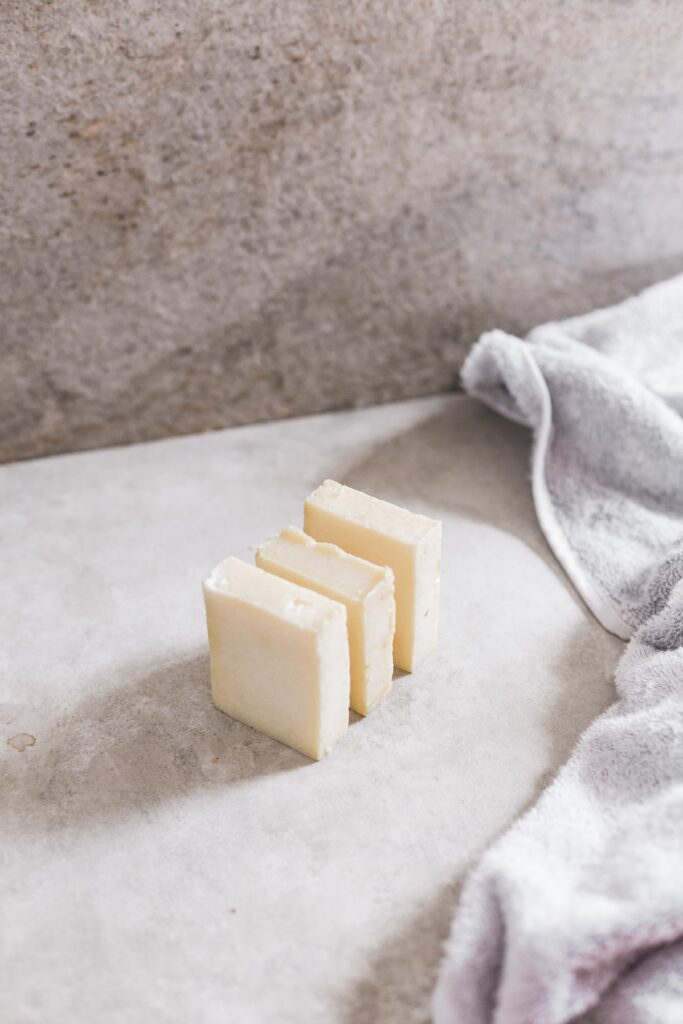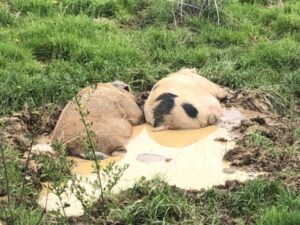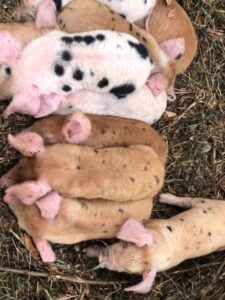The War on Natural Beauty

In the constant pursuit of flawless skin, consumers are bombarded with myriad skincare products that promise miraculous results. Amidst the overwhelming variety of options, however, one centuries old, all-natural ingredient is often cast to the weyside: lard. The humble pig’s fat has been unfairly demonized for the last seventy years as part of the war on saturated fats. Aggressive marketing campaigns and big pharmaceutical companies have pushed lard out of daily use in favor of heavily synthesized compounds that are easier to patent and mark up in price.
PATENTS FOR PROFIT
In the early 20th century, Crisco led the way for hydrogenated vegetable oils to be used more broadly than ever before. Where previously these were used only to make candles, the rise of household electricity saw these oils becoming less lucrative for the company. Crisco had a simple answer for this: the Crisco Cookbook. With a heavy marketing campaign directed to housewives, Crisco began selling its waste as an ingredient for health-minded meals—simultaneously demonizing saturated fats, like lard, and spreading the idea that they were for low class individuals. The campaign’s impact was profound, and over time Americans accepted the idea that animal fat should be avoided.

Crisco led the way for hydrogenated vegetable oils to be used more broadly than ever.
Hydrogenated vegetable oils like corn, palm, and soy began to be used in an enormous amount of products, including cosmetics, lipsticks, moisturizers, creams and soaps all contained what was previously a waste product, leaving consumers to spread it on their skin daily.

Over the years, conglomerates like big pharmaceutical companies have moved into the cosmetic skincare industry. It’s no secret that big pharma influences skincare heavily, capitalizing on the demand for quick fixes and benefitting from patent-driven profits. As a result, today the vast majority of products contain synthetics and chemical-compounds that create dependence on lab-made formulas, rather than utilizing the benefits offered by all-natural alternatives. Consumers are often driven to rush to the store to purchase the latest “miracle cream,” rather than learning about and making use of natural ingredients that have stood the test of time.
WHAT THESE COMPANIES OVERSHADOW
Lard contains high amounts of oleic acid—a fatty acid that naturally moisturizes and protects the skin’s natural moisture barrier, never stripping it down. This is not only especially beneficial for people with sensitive skin, but anyone who is hoping to maintain a clean, healthy glow. It’s also naturally rich in vitamins A, D, E, and K, which are often synthesized and added to modern high-end products. Together, they promote the:
- Production of Collagen
- Regeneration of skin cells
- Protect against free radicals
All of this together promotes healthy, youthful skin by nourishing and exfoliating, gently and safely.
As if that wasn’t enough, lard also has palmitoleic acid, which is anti-inflammatory as well as antimicrobial. This means that lard will keep redness down and bacteria out, preventing acne, infection, and soothing even the most irritated skin.
Traditional remedies like lard deserve a place on all of our bathroom shelves. The reasons for its removal from the common perception aren’t based on our wellness, but dollars, and we are wise enough now for another shift in perception. Breaking free from the aggressive marketing of the previous century, we can embrace natural, traditional, and effective ingredients like lard for the skin we’ve all been seeking.
NOT JUST ANY LARD WILL DO
It’s essential, as we begin to accept the benefits of lard in skincare, that we also talk about the impact of modern day farming practices on the lard widely available today. To embrace the traditional value of lard also means to embrace the sustainable and wholesome farming practices of that tradition. In the early 1900s and prior, pigs were raised in small scale, sunny, free range areas. They could wander, forage for food, and bask in the light freely; just as they deserve. This kept the animals—and, as a result, their fat—healthy. Since then, industrialized large-scale farming has lost these practices and our lard has lost much of its benefit.
Pigs in crowded, indoor spaces get less exercise and less sunlight, a major source of vitamin D. Without it, pigs are less happy and less healthy, and their fat less nutrient-rich. To make the matter worse, food provided for modern pigs is no longer “real food” waste, as they had before. Today, commercial pig feed is often riddled with preservatives and other additives, providing little nutrition. Additionally, the broad use of plastic in industrial farms means many pigs are having microplastics introduced to their food supply. All of this finds its way into the industrially provided lard.
Beginning to understand and use lard-based skincare necessitates the considerations of its holistic roots. Ethical, sustainable pig farming uses the wisdom of prior generations, providing pigs with sunshine, room to roam, and healthy, balanced diets. By returning to the farming practices of the past we not only ensure the wellbeing of our animals, but also the quality of the lard used in Farrow skincare. Supporting local farmers who raise pigs right allows for highly beneficial ingredients, animal health, and the overall sustainment of our ecosystem.
Written By: Geneva Decobert






